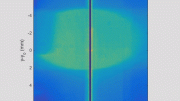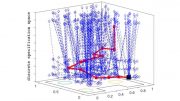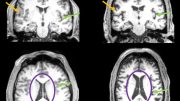
New research reveals many excess deaths during the COVID-19 pandemic were likely due to uncounted virus fatalities, challenging the accuracy of official death counts and underscoring the need for precise mortality data. Credit: SciTechDaily.com
The new study provides the most compelling data yet to suggest that excess mortality rates from chronic illnesses and other natural causes were actually driven by COVID-19 infections.
Nearly 1,170,000 people have died from COVID-19 in the United States according to official federal counts, but multiple excess mortality studies suggest that these totals are vastly undercounted. While excess mortality provides an estimation of deaths that likely would not have occurred under normal, non-pandemic conditions, there is still little evidence into whether the SARS-CoV-2 virus contributed to these additional deaths, or whether these deaths were caused by other factors such as healthcare disruptions or socioeconomic challenges.
Now, a new study led by the School of Public Health and the University of Pennsylvania (UPenn) provides the first concrete data showing that many of these excess deaths were indeed uncounted COVID-19 deaths.
Published in the journal PNAS, the study compared reported COVID-19 deaths to excess deaths due to non-COVID, natural causes, such as diseases and chronic illnesses, and found that increases in non-COVID excess deaths occurred at the same time or in the month prior to increases in reported COVID-19 deaths in most US counties.
Focusing on excess deaths by natural causes rather than all-cause excess death estimates provides a more accurate understanding of the true number of deaths attributable to COVID-19, as it eliminates external causes for mortality, such as intentional or unintentional injuries, for which COVID-19 would not be a contributing factor.
“Our findings show that many COVID-19 deaths went uncounted during the pandemic, says study corresponding author Andrew Stokes, associate professor of global health, who has led numerous studies analyzing excess mortality patterns and drivers during the pandemic.
The temporal correlation between reported COVID-19 deaths and excess deaths reported to non-COVID-19 natural causes offers insight into the causes of these deaths, he says. “We observed peaks in non-COVID-19 excess deaths in the same or prior month as COVID-19 deaths, a pattern consistent with these being unrecognized COVID-19 deaths that were missed due to low community awareness and a lack of COVID-19 testing.”
If the primary explanation for these deaths were healthcare interruptions and delays in care, the non-COVID excess deaths would likely occur after a peak in reported COVID-19 deaths and subsequent interruptions in care, says study lead author Eugenio Paglino, a PhD student studying demography and sociology at UPenn. “However, this pattern was not observed nationally or in any of the geographic subregions we assessed,” Paglino says.
“This work is important because our ability to detect and correctly assign deaths during an epidemic goes to the heart of our understanding of the disease and how we organize our response,” says Nahid Bhadelia, founding director of the Boston University Center on Emerging Infectious Diseases.
For the study, Stokes, Paglino, and colleagues utilized novel statistical methods to analyze monthly data on natural-cause deaths and reported COVID-19 deaths for 3,127 counties over the first 30 months of the pandemic, from March 2020 to August 2022. They estimated that 1.2 million excess natural-cause deaths occurred in US counties during this time period, and found that roughly 163,000 of these deaths did not have COVID-19 listed at all on the death certificates.
Analyzing both temporal and geographical patterns of these deaths, the researchers found that the gap between these non-COVID excess deaths and reported COVID-19 deaths was largest in nonmetropolitan counties, the West, and the South—and that the second year of the pandemic saw almost as as many non-COVID excess deaths in the second year of the pandemic as in the first year, contrary to previous research. Meanwhile, metropolitan areas in New England and the Mid-Atlantic states were the only areas to report more COVID-19 deaths than non-COVID excess deaths.
Many of these geographical differences in death patterns are likely explained by differences in state policies, COVID death protocols, or political biases by local officials that influenced COVID policies, the researchers say. In rural areas, for example, COVID-19 testing was more limited, and political biases or stigma around COVID may have affected whether COVID-19 was listed on a death certificate. Conversely, reported COVID-19 deaths may have exceeded non-COVID excess deaths due to successful mitigation policies that encouraged physical distancing and masking, and likely lowered cases of other respiratory diseases. Certain state protocols, such as in Massachusetts, also enabled death investigators to list COVID-19 as an official cause of death within 60 days of a diagnosis (until March 2022), rather than the 30-day limit in other states.
“Geographic variation in the quality of cause of death reporting not only adversely affected pandemic response in areas where COVID-19 deaths were underreported, but it also reduced the accuracy of our national surveillance data and modeling,” says study coauthor Katherine Hempstead, senior policy adviser at the Robert Wood Johnson Foundation.
“Rapid detection of non-typical mortality patterns could pinpoint the emergence of local novel disease clusters and become an important tool for more effective pandemic mitigation,” says Yannis Paschalidis, distinguished professor of engineering, director of the Hariri Institute, and principal investigator of a National Science Foundation project at BU on Predicting and Preventing Epidemic to Pandemic Transitions.
Importantly, these findings also disprove political assertions or public beliefs that have attributed mortality during the pandemic to COVID-19 vaccinations or shelter-in-place policies.
“Accurate information on how many people in a community die from COVID-19—or any other cause—is essential for making decisions about public health,” says study coauthor Maria Glymour, chair and professor of epidemiology. “It is also important for families. Everyone deserves to know why a loved one died. Resources and commitment to ensure accurate death investigations are essential, and these findings of uncounted COVID-19 deaths indicate those resources are lacking in many communities.”
The researchers hope this new data will encourage future analyses using hospitalizations and other local data to continue to parse uncounted COVID-19 deaths from excess natural-cause as well as external deaths.
“This study documents the deadliness of COVID-19 and the effectiveness of public health interventions,” said Kristin Urquiza, who cofounded Marked By COVID, the justice and remembrance movement led by COVID grievers, after losing her father to COVID. “The least we can do to honor those who died is to accurately account for what happened.”
Reference: “Excess natural-cause mortality in US counties and its association with reported COVID-19 deaths” by Eugenio Paglino, Dielle J. Lundberg, Elizabeth Wrigley-Field, Zhenwei Zhou, Joe A. Wasserman, Rafeya Raquib, Yea-Hung Chen, Katherine Hempstead, Samuel H. Preston, Irma T. Elo, M. Maria Glymour and Andrew C. Stokes, 1 February 2024, Proceedings of the National Academy of Sciences.
DOI: 10.1073/pnas.2313661121
At SPH, the study was coauthored by alum Dielle Lundberg (SPH’19), research assistant in the Department of Global Health and PhD student at University of Washington School of Public Health, alum Zhenwei Zhou (SPH’23), and Rafeya Raquib (SPH’22), research fellow in the Department of Global Health. It was also coauthored by Elizabeth Wrigley-Field, associate professor of sociology at the University of Minnesota; Joe Wasserman, research public health analyst 2 at RTI International; Yea-Hung Chen, research data specialist in epidemiology and biostatistics at the University of California, San Francisco; Samuel Preston, professor of sociology at UPenn; and Irma Elo, Tamsen and Michael Brown Presidential Professor of Sociology at UPenn. It was funded by The Robert Wood Johnson Foundation, the National Institute on Aging, the Eunice Kennedy Shriver National Institute of Child Health and Human Development, the W.K. Kellogg Foundation, and the Agency for Healthcare Research and Quality.









Be the first to comment on "Shadows in the Data: The Ghost Victims of COVID-19 Unveiled"